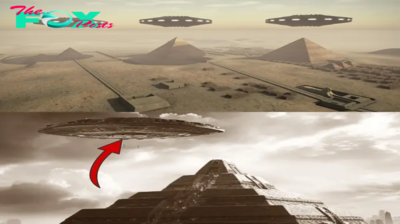Weird Animals
nht.Merneptah: Fourth Pharaoh of Egypt’s Nineteenth Dynasty and the First Royal-Born Ruler Since Tutankhamun
Merneptah, the fourth pharaoh of Egypt’s Nineteenth Dynasty, reigned from around July or August 1213 BC to May 2, 1203 BC. His nearly decade-long rule marked a significant period in ancient Egyptian History. As the thirteenth son of the renowned Pharaoh Ramesses II, Merneptah was not initially expected to ascend to the throne. However, the premature deaths of his elder brothers positioned him as the heir, a role he assumed in his advanced years. Notably, Merneptah was the first pharaoh since Tutankhamun of the Eighteenth Dynasty to be born into the royal family, a fact that underscored the legitimacy of his reign.
Merneptah’s reign is well-documented through various inscriptions and monuments that provide insight into his leadership and the challenges he faced. One of the most significant records from his time is the Merneptah Stele, also known as the Israel Stele. This granite stele, discovered in Thebes in 1896, is notable for containing the earliest known reference to Israel outside the Bible. The inscription celebrates Merneptah’s Military victories in Canaan and Libya, asserting his dominance over various rebellious territories. This artifact not only highlights Merneptah’s Military prowess but also provides valuable information on the geopolitical landscape of the region during his reign.

Merneptah’s Military campaigns were crucial in maintaining Egypt’s stability and iNFLuence. His most significant Military challenge came from the Libyans and their allies, who invaded the western Nile Delta. In response, Merneptah led a successful campaign that decisively defeated the invaders. The battle, vividly described in the Great Karnak Inscription, showcases Merneptah’s strategic acumen and the strength of the Egyptian Military. This victory was crucial in securing Egypt’s borders and reaffirming Merneptah’s authority.
Domestically, Merneptah continued the building projects initiated by his father, Ramesses II, though on a smaller scale. He completed the funerary temple of his father at Thebes and contributed to various temples across Egypt, ensuring that the religious and cultural life of the kingdom thrived. These constructions were not only religious in nature but also served to legitimize his reign by associating him with the divine and his illustrious predecessor.
Despite his achievements, Merneptah’s reign was not without internal challenges. The lengthy rule of Ramesses II had left a powerful and deeply entrenched bureaucracy that Merneptah had to navigate. Additionally, his advanced age at the time of his accession meant that he had limited time to establish a long-lasting legacy compared to other pharaohs. Nonetheless, he managed to maintain stability and continuity in a period that could have been fraught with succession disputes and external threats.
Merneptah’s death on May 2, 1203 BC, marked the end of an era. His successors faced increasing difficulties, including economic troubles and foreign invasions, which eventually led to the decline of the Nineteenth Dynasty. However, Merneptah’s decade-long rule remains a testament to his capabilities as a leader who upheld Egypt’s traditions and safeguarded its territories.
In conclusion, Merneptah’s reign as the fourth pharaoh of the Nineteenth Dynasty was marked by significant Military achievements, continuity of cultural and religious practices, and the unique distinction of being the first royal-born ruler since Tutankhamun. His leadership during a turbulent time ensured that Egypt remained a formidable power, and his legacy, captured in inscriptions and monuments, continues to be a subject of fascination for historians and archaeologists alike.
-

 Weird Animals4w ago
Weird Animals4w agonht.The astonishing discovery of an alien mummy, perfectly preserved as if alive, shocked everyone.
-

 Weird Animals4w ago
Weird Animals4w agonht.Discover the chilling tale of the 1818 UFO crash and the lost portal to another planet.
-

 Weird Animals4w ago
Weird Animals4w agonht.Uncovering Lunar Mysteries: Ex-NASA Insiders Claim Extraterrestrial Presence in Lunar Structures
-

 Weird Animals1m ago
Weird Animals1m agonht.Today’s breaking news: a mysterious floating city-like UFO discovered in Dulali village has caused widespread panic.
-

 Weird Animals1m ago
Weird Animals1m ago.The Astonishing and Terrifying Experience of Coming Face to Face with a 4-Meter Octopus!..D
-

 Weird Animals1m ago
Weird Animals1m agonht.Breaking News: Documentaries Uncover UFO Crashes in the Desert
-

 Weird Animals1m ago
Weird Animals1m agonht.Breaking news: Utah woman claims to have raised abducted aliens since 1923, shocking everyone.
-

 Weird Animals1m ago
Weird Animals1m agonht.Exploring Egyptian Pyramids: Archaeological Finds Include UFO Detection and Surprising Discoveries
























